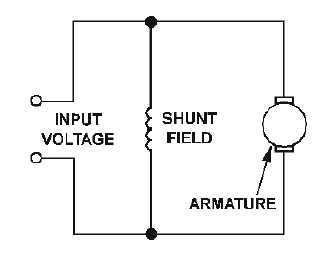2-6
Figure 2-4.—Shunt-wound dc motor.
Once you adjust the speed of a dc shunt motor, the speed remains relatively constant even under
changing load conditions. One reason for this is that the field flux remains constant. A constant voltage
across the field makes the field independent of variations in the armature circuit.
If the load on the motor is increased, the motor tends to slow down. When this happens, the counter
emf generated in the armature decreases. This causes a corresponding decrease in the opposition to
battery current flow through the armature. Armature current increases, causing the motor to speed up. The
conditions that established the original speed are reestablished, and the original speed is maintained.
Conversely, if the motor load is decreased, the motor tends to increase speed; counter emf increases,
armature current decreases, and the speed decreases.
In each case, all of this happens so rapidly that any actual change in speed is slight. There is
instantaneous tendency to change rather than a large fluctuation in speed.
Q9. What advantage does a shunt motor have over a series motor?
COMPOUND MOTOR
A compound motor has two field windings, as shown in figure 2-5. One is a shunt field connected in
parallel with the armature; the other is a series field that is connected in series with the armature. The
shunt field gives this type of motor the constant speed advantage of a regular shunt motor. The series field
gives it the advantage of being able to develop a large torque when the motor is started under a heavy
load. It should not be a surprise that the compound motor has both shunt- and series-motor characteristics.

